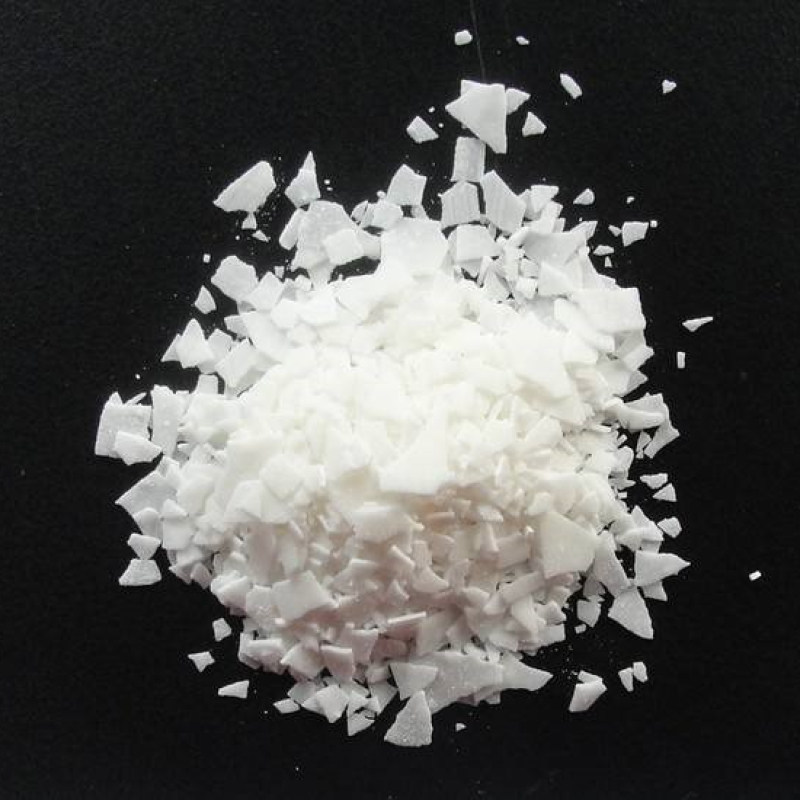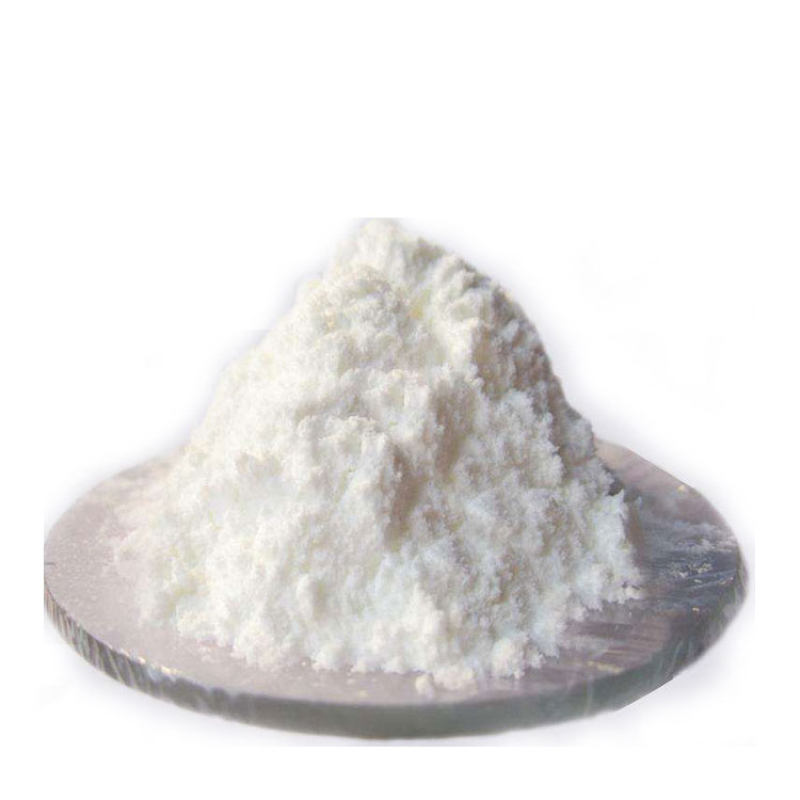Products Description of AMBERLITE(R) IRA-400 (CL) CAS#9002-24-8717 Strong Base Anion Exchange Resin is a chemical substance.AMBERLITE(R) IRA-400 (CL) Chemical PropertiesWater Solubility Insoluble in water.Merck 14,382Safety InformationRisk Statements 36/37/38Safety Statements 26-36WGK Germany 3TSCA YesProduct Application of AMBERLITE(R) IRA-400 (CL) CAS#9002-24-8Used for softening water, preparing high-purity water, refining radioactive elements, extracting iodine from seaweed, refining antibiotics, industrial wastewater treatment, etc.Factory and Equipm
Contact Now
Products Description of ORALITH BRILLIANT PINK R CAS#2379-74-0Reduction of pink red R to thioindigo dyes is mainly achieved by oxidizing unsubstituted or substituted benzo[b]thiophene-3 or naphtho[2,3-b]thiophene using various oxidants such as bromine in a chlorosulfonic acid medium, polysulfides, oxygen in the presence of copper salts, etc.ORALITH BRILLIANT PINK R Chemical PropertiesBoiling point 529.1±50.0 °C(Predicted)density 1.583±0.06 g/cm3(Predicted)storage temp. Sealed in dry,Room Temperatureform SolidColour Index 73360color RedLogP2.06 at 22℃ and pH7E
Contact Now
Products Description of CREMOPHOR (R) A25 CAS#68439-49-6CETETH25 is a nonionic emulsifier obtained by adding natural saturated fatty alcohol and ethylene oxide. CETETH25 (HLB15-17) is an oil-in-water (O/W) emulsifier. When used together with CETETH6, it forms a pair of complementary emulsifiers. The emulsifier pair has a small amount of use and a strong emulsification ability. The prepared emulsion products have high stability and bright appearance. It can tolerate a certain degree of inorganic salts and extreme pH conditions.
Contact Now
Products Description of AMBERLITE(R) XAD-4 CAS#37380-42-0Ion exchange resin is a kind of functional polymer that can exchange with ions of the same sign in aqueous solution. It is essentially a cross-linked polymer acid or polymer base. Phenolic cation exchange resin was first introduced in 1935, and industrial production began in Germany in 1939 and the United States in 1941. After World War II, polystyrene and polyacrylic acid ion exchange resins were put into production one after another. After the 1960s, macroporous ion exchange resins were developed.
Contact Now
Products Description of (R)-(-)-2-Methylpiperazine CAS#75336-86-6 White to light yellow crystalline solid.
Contact Now
Products Description of (R)-(-)-3-Carbamoymethyl-5-methylhexanoic acid CAS#181289-33-8(R)-(-)-3-(Carbamoylmethyl)-5-methylhexanoic acid is solid at room temperature and pressure, soluble in dimethyl sulfoxide, N,N-dimethylformamide and other organic solvents; it has poor solubility in ether solvents and can be used as an intermediate in chiral organic synthesis.
Contact Now
Products Description of (-)-(R)-Mandelic Acid CAS#611-71-2D-mandelic acid is a polar molecule. Because it contains hydroxyl and carboxyl groups, the molecule has a certain degree of hydrophilicity. Since D-mandelic acid is a chiral molecule, its physical and chemical properties are affected by the stereostructure of its molecule. In addition, the acid-base properties of D-mandelic acid are also affected by the molecular structure.
Contact Now
Products Description of Sodium hydrosulfideCAS#16721-80-5Sodium hydrosulfide is used in the dye industry to synthesize organic intermediates and as an auxiliary agent for preparing sulfur dyes, in the leather industry to dehair and tan leather, in the fertilizer industry to remove monomer sulfur in activated carbon desulfurizers, in the mining industry to be used in large quantities for copper ore dressing, in the production of artificial fibers for sulfite dyeing, etc.
Contact Now
Products Description of 6-CHLOROIMIDAZO[1,2-B]PYRIDAZINE-2-CARBOXYLIC ACID CAS#14714-24-06-Chloromidazo[1,2-B]pyridazine-2-carboxylic acid can be used to prepare compounds which can be used as active pharmaceutical substances, in particular Trk antagonists, i.e. they block the intracellular kinase activity of Trk, e.g. TrkA (NGF) receptors. Tropomyosin-related kinases (Trks) are a family of receptor tyrosine kinases activated by neurotrophic factors. Trks play an important role in pain perception and in tumor cell growth and survival signaling.
Contact Now
Silicone oil CAS#63148-62-9Silicone oil having a silica structure and is liquid at room temperature and is called as siloxane, referred as silicone oils. The simplest polydimethylsiloxane is as formula [1]. In [2], if the R, R1, R2 are all methyl groups, it is called α, ω-trimethylsilyloxy polydimethylsiloxane, that’s the commonly called silicone oil. It is a linear polymer of a low molecular weight. If R1 and R2 are not a methyl group, then it is not related to this article. Silicone oil is a colorless or light yellow transparent liquid and is odorless and tasteless.
Contact Now
Products Description of Dimethyl terephthalate CAS#120-61-6Dimethyl terephthalate (DMT) is a key precursor in the production of polyethylene terephthalate (PET), widely recognized for its applications in the manufacturing of plastic bottles, fibers, and films. In academic and industrial R&D, DMT is the subject of innovative research, such as its hydrogenation to dimethyl cyclohexanedicarboxylates (DMCD) using bimetallic catalysts, which has demonstrated an 80% conversion rate and 95% selectivity under optimized conditions 43.
Contact Now
Products Description of Diethylene glycol CAS#111-46-6Diethylene glycol (DEG) is a multifaceted compound with a pivotal role in pharmaceuticals, cosmetics, and textiles. Our firm boasts a robust track record of international collaboration, supplying DEG for applications from liquid medications to skincare formulations and advanced textile dyeing processes. Our R&D arm, in synergy with academic excellence, propels innovation, ensuring our DEG consistently exceeds purity benchmarks, typically at ≥99.9%.
Contact Now
Paraffin, Liquid CAS#8012-95-1Mineral oil mist is a colorless, oily liquid aero-sol dispersed in air with an odor like burned lubricating oil.The odor threshold is 1.0 ppm. Specific gravity (H2O:1)=0.865 at 60℃; Boiling point = 250- 360*C; Vaporpressure = <0.5 mmHg at 20℃; Flash point= 193℃;Autoignition temperature = 260- 371℃. HazardIdentification (based on NFPA-704 M Rating System):Health 0, Flammability 1, Reactivity 0. Insoluble in water.Product Name:Paraffin, liquidSynonyms:PARAFFIN VISCID, EXTRA PURE, DAB, PH. EU R., B. P., PH.
Contact Now
Products Description of OP 935 CAS#225789-38-8 As a new type of phosphorus-based flame retardant, diethylaluminum hypophosphite has high thermal stability, chemical stability and environmental friendliness, and can be used as an excellent polymer material flame retardant to replace environmentally harmful halogen flame retardants.OP 935 Chemical PropertieWater Solubility 1.6g/L at 25℃CAS DataBase Reference225789-38-8Product Application of OP 935 CAS#225789-38-8 The main chemical bonds in the structure of diethyl aluminum hypophosphite are P-C, P=O, P-O, and its flame r
Contact Now
Products Description of Sodium hydrogen ferric DTPA CAS#12389-75-2White powder.Sodium hydrogen ferric DTPA Chemical Propertiesdensity 1.607[at 20℃]Water Solubility 113g/L at 30℃LogP-11.9EPA Substance Registry SystemFerrate(2-), [rel-[N(R)]-N-[2-[bis[(carboxy-.kappa.O)methyl]amino-.kappa.N]ethyl]-N-[2-[(S)-[(carboxy-.kappa.O)methyl](carboxymethyl)amino-.kappa.N]ethyl]glycinato(5-)-.kappa.N,.kappa.O]-, sodium hydrogen (1:1:1), (PB-7-13-12564)- (12389-75-2) Factory and Equipment ShowFast delivery timeInventory 2-3 working days New production 7-10 working days
Contact Now
Sodium formate CAS#141-53-7The main purpose of sodium formate as follows:Sodium formate can be used as chemical analysis reagent, used for determination of arsenic and phosphorus, also used as a disinfectant, mordant and so on.
Contact Now
Products Description of Sodium amide CAS#7782-92-5Sodium amide, also known as sodium amide or sodium ammonia, is a white or olive green crystalline powder with an ammonia smell. Its chemical formula is NaNH2, its molecular weight is 39.01, its melting point is 210℃, and its boiling point is 400℃. It decomposes into sodium, nitrogen and hydrogen when heated to 500-600℃. It reacts violently with water to form sodium hydroxide and release ammonia gas. It is slightly soluble in liquid ammonia and reacts slowly with alcohol.
Contact Now
Products Description of Sodium hydroxide CAS#1310-73-2Sodium hydroxide, also known as caustic soda and caustic soda, has the chemical formula NaOH. It is a highly corrosive strong alkali, usually in the form of white flakes or granules. It can be miscible with water to form an alkaline solution, and can also be dissolved in methanol. and ethanol. This alkaline substance is deliquescent and will absorb water vapor in the air as well as acidic gases such as carbon dioxide. Sodium hydroxide is one of the commonly used chemicals.
Contact Now
Products Description of Sodium chlorite CAS#7758-19-2Liquid sodium chlorite is a white or slightly yellow-green aqueous solution, alkaline, and slightly hygroscopic. It is easily soluble in water and alcohol. Sodium chlorite is relatively stable at room temperature and under normal storage conditions. It is easy to decompose and release chlorine dioxide gas when it comes into contact with acid.
Contact Now
Products Description of Sodium Hydroxymethanesulphinate CAS#149-44-0Sodium bisulfite formaldehyde is translucent white orthorhombic crystals or small pieces. Apparent density 1.80~1.85g/cm3. Easily soluble in water, slightly soluble in alcohol. It has extremely strong reducing properties under high temperature and can make the dyed color disappear, so it is known as the chemical book of hanging white blocks. It decomposes when exposed to acid, and decomposes at 120°C to produce toxic gases such as formaldehyde and hydrogen sulfide.
Contact Now
Products Description of Sodium Oleate CAS#143-19-1Sodium oleate, also known as sodium octadecenoate, cis-9-octadecenol, oleyl alcohol, cis-9-octadecenol, (Z)-octadecene-9-enol, olive oil alcohol, cis -9-Octadecen-1-ol, 9-n-octadecenol, octadecenol. It is an organic oil with the chemical formula C17H33CO2Na. Sodium acid acid is the main component of soaps made from olive oil and other soaps. It is also the main component of tallow soap. It can also be produced by the reaction of sodium hydroxide and oleic acid. It is a compound composed of hydrophobic and hydrophilic groups.
Contact Now
Products Description of Sodium Oleate CAS#143-19-1Sodium oleate, also known as sodium octadecenoate, cis-9-octadecenol, oleyl alcohol, cis-9-octadecenol, (Z)-octadecenol, olive oil alcohol, cis-9-octadecen-1-ol, 9-n-octadecenol, octadecenol. It is an organic oil with the chemical formula C17H33CO2Na. Sodium oleate is the main component of soap made from olive oil and tallow soap. It can also be made by reacting sodium hydroxide with oleic acid. It is a compound composed of a hydrophobic group and a hydrophilic group.
Contact Now
Products Description of Sodium Hydroxide CAS#1310-73-2Sodium hydroxide, also known as caustic soda and caustic soda, has the chemical formula NaOH. It is a highly corrosive strong base, usually in white flakes or granules. It can be mixed with water to form an alkaline solution, and can also be dissolved in methanol and ethanol. This alkaline substance is deliquescent and will absorb water vapor in the air, as well as acidic gases such as carbon dioxide. Sodium hydroxide is one of the commonly used chemicals.
Contact Now
Products Description of Sodium chloroacetateCAS#3926-62-3White powder. Solubility in water at 20℃ is 85g/100ml. Slightly soluble in methanol, insoluble in ether, benzene, acetone and carbon tetrachloride. Toxicity: Oral LD50 in rats is 75mg/kg.
Contact Now










![6-CHLOROIMIDAZO[1,2-B]PYRIDAZINE-2-CARBOXYLIC ACID CAS#14714-24-0](https://sdluxicdn.huazhi.cloud/cdn/ff/vbP0AMU1SZWoeuPOBqSMI1QHHcX8Iq0KlluvtoZIwQw/1717571201/public/styles/chanpinzhutu/public/2024-06/%E9%BB%84%E8%89%B2%E9%A2%97%E7%B2%92%20%283%29_0.jpg?itok=ni7182_2)






















